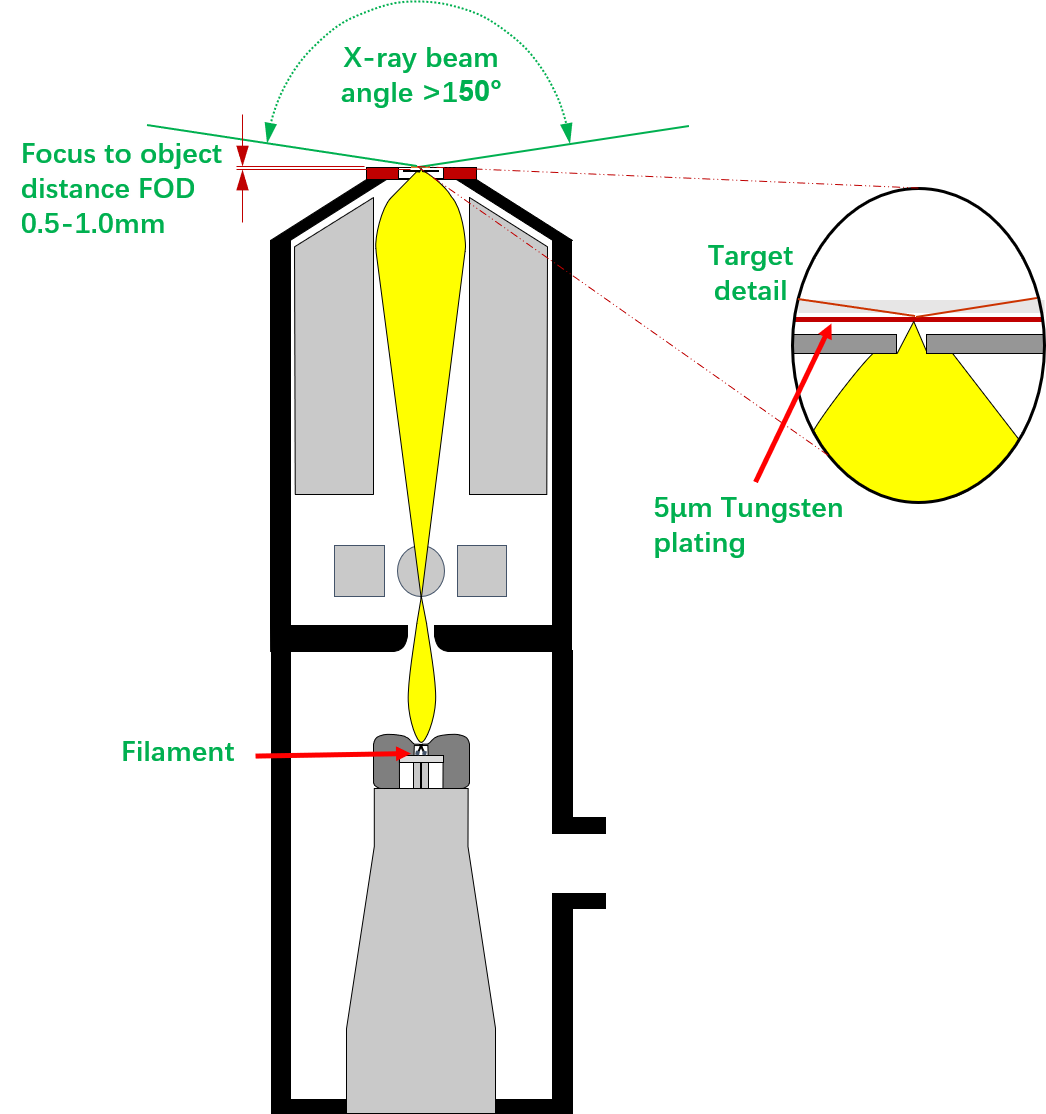Skip to contentHow does an open micro-focus X-ray tube works
In the previous article, we talked about the principle of a closed microfocus X-ray tube for X-ray inspection equipment. Correspondingly, there is an open microfocus X-ray tube. They are distinguished according to how the vacuum inside the X-ray tube is generated.
The closed X-ray tube is always kept in a vacuum state, and the open X-ray tube has a device to open the X-ray tube, which is not sealed because it has to replace the filament. Therefore, the open X-ray tube cannot keep in a vacuum state, it needs to vacuum the interior before warming up.
Microfocus X-ray tubes below 160KV on the market are basically closed. Microfocus X-ray tubes above 160KV are basically open.
Open X-ray tubes use the same method as closed X-ray tubes to generate X-rays: Accelerating the electrons and hitting a metal target, 99% of electrons’ lost kinetic energy is converted into thermal energy, which causes the target to generate heat; the remaining 1% of the kinetic energy emits photons, generates X-rays.

As shown above, the high voltage generator applies a high voltage current to the tungsten wire of the cathode to generate an electron beam and provides sufficient voltage (ten to more than one hundred kilovolts) between the cathode and anode, so that the electron beam is in high energy and high-speed state.
After hitting the anode target (the material is also usually tungsten), it can reduce the area where the electron beam strikes after electrostatic focusing, that is, reduce the focus size. The 1% of the kinetic energy lost by the electron beam is converted into X-rays, which pass through the beryllium window and are emitted outward.
The difference is that the open X-ray tube reserves a device for opening it for replacing the aged filament. It also has a smaller focus to object distance FOD and a larger X-ray beam angle.
So, what are the differences between open and closed X-ray tubes? We will go into more detail in the next article.
